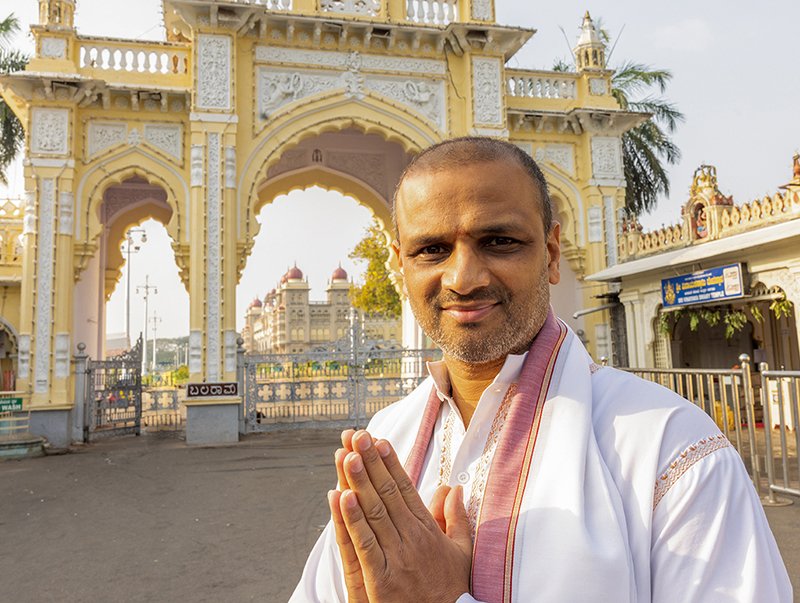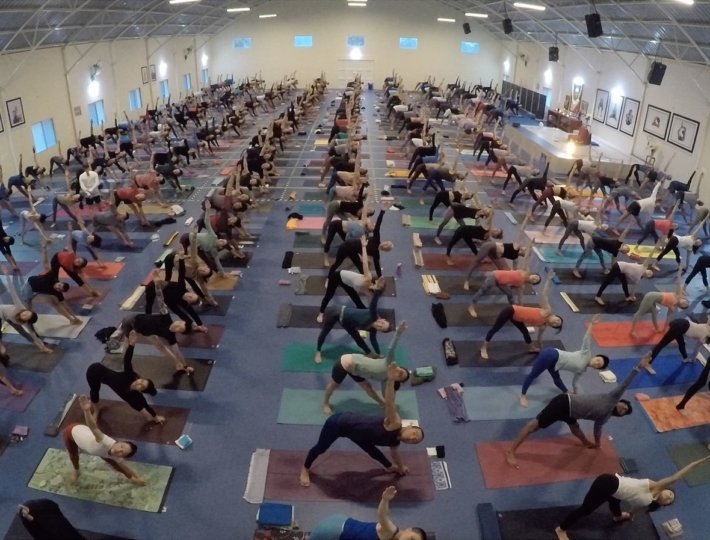Recently, I was working a particularly long day with numerous deadlines looming. As the hours crept on, I noticed two things: One, that my jaw was tight; and two, I was not breathing. Well, yes, technically I was breathing, but my breath was shallow and short. I took a necessary break and went outside for a stretch and some gulps of fresh air. I instantly felt better, calmer, and ready to go back to work.
The breath is one of the most powerful tools at our disposal for self-regulation, energy generation, and overall health. Even though we are constantly inhaling and exhaling, the power of breath can be elusive to many of us. “We’ve diminished our capacity [for breathing] so thoroughly that we are only using the very top of the lungs—just barely getting by,” says Belisa Vranich, Psy.D., author of the book Breathe.
Studies have demonstrated the phenomenal impact that breath awareness can have on our health and well-being. Different practices achieve different results. Preliminary studies show that the pranayama, or breath regulation, practice Nadi Shodhana, also known as alternate-nostril breathing, can decrease blood pressure and aid in creating a sense of ease and calm by igniting the parasympathetic nervous system. During alternate-nostril breathing, the practitioner plugs one nostril and slowly inhales through the other, and then plugs the other nostril and exhales out the opposite side. You can watch a complete tutorial of this calming breathing practice here. Reduced stress is also a multiplier of health benefits. Stress is a significant factor in the progression of autoimmune disease , and lacking the tools for self-regulation, many people suffer from insomnia, anxiety, and panic attacks.
Another technique that benefits the nervous system is the practice of Kapalabhati, or skull-polishing breath, a breathing style in which the practitioner takes a deep breath, bringing air to the belly, and then releases the air in a series of short, explosive exhales. In a small study of men, researchers found that mental function was improved following the specific breathing practice through the stimulation of the sympathetic nervous system, enhancing cognitive performance.
To understand the effect breathing has on the body, it’s important to acknowledge the nuances of the autonomic nervous system, the bodily system that regulates the internal organs, instincts, and other primal functions typically outside our conscious awareness. This system has two control functions, the sympathetic and parasympathetic nervous systems. When our breathing is short and rapid, our stress hormones kick into gear—the kind of gear that originally told us “A tiger is chasing me, I must flee!” Today’s more mundane stressors, such as, “I have to send this e-mail before my deadline,” or “I’m kind of upset at so-and-so,” tax our system and can drain our adrenals, leaving us depleted. We suffer from burnout and need more practices that attend to our inner nurturing—our parasympathetic nervous system. The parasympathetic nervous system is our “rest-and-digest” mode, which aids in dropping the heart rate and blood pressure, initiating a state of calm.
When we use the breath skillfully, we can support the sympathetic and parasympathetic systems, ensuring healthy physiological responses. Different breath practices can ignite different states—either elevating energy or relaxing the body. We can control our emotional states and activate the parasympathetic or sympathetic systems, depending on what we need and how we’re feeling. Anxiety, poor sleep, and stress are significant factors in chronic health conditions—all of which could be improved by disciplined attentiveness to the breath.
The physical effects of breathing are often misattributed to increased oxygen intake through the breath. In the book The Science of Yoga, author William J. Broad points out that the effect is essentially the opposite. “The body’s consumption of oxygen does go up and down, but science demonstrates that it does so in response to changes of muscle activity, metabolism, and heart rate—not breathing styles,” he writes. In reality, fast breathing lowers the body’s store of carbon dioxide, increasing excitability of nerves and muscles, and also causing the blood vessels in the brain to contract, thereby reducing the flow of oxygen, and producing light-headedness.
Larissa Hall Carlson, Dean of the Kripalu School of Ayurveda, teaches pranayama and feels strongly about its benefits. “The skillful use of breathing techniques is essential to elicit the desired benefit. If one wants to reduce stress, relax, and experience more peacefulness, then the pranayama that would most align with that desired outcome would be more slow, steady, softening and calming. If one wants to feel more awake, alert, energized, and stimulated, then the pranayama that would most align with that desired outcome would be rapid, expansive, full, and deep.”
Practices such as yoga, pranayama, and meditation have brought more attention to conscious breathing, but many of us still don’t know how to breathe correctly. “It is well and good to perform pranayama, but if you don’t truly know how to breathe, using your fully body, you won’t gain the benefits from that practice,” says Vranich.
Here are three tips and practices that can help us foster self-regulation and grounding. (Be sure to consult a clinician if you have any health concerns.)
Breathe Deeply. When we take the time to not just inhale as fully as possible but to truly release and breathe into the lower body, we feel a difference. “We must learn to let go of our bellies,” says Vranich. “So many of us, especially women, have been taught to hold our bellies in. This doesn’t let us breathe, and if we want to truly be healthy, we must let go. I’ve worked with athletes, military personnel—tons of populations—who just don’t know how to perform this simple practice.” Give it a try: Place one hand on your lower belly and take a slow, deep breath through your mouth. Your abdomen expands as you inhale. As you exhale, blow out through your mouth again and feel your stomach contract, then release. Repeat this for three to five minutes to revitalize your body. You will feel a difference.
Vagus, Baby. The vagus nerve regulates a variety of body functions, including digestion, heart rate, and breathing musculature. When the sympathetic nervous system is overworked, we need the parasympathetic to bring things in order. Deep diaphragmatic breathing can stimulate the vagus nerve, slowing the heart rate and lessening anxiety. “If you’re going to activate your vagus nerve, you have to breathe through your belly—lower body breath. You have to make your exhale longer than your inhale,” notes Vranich. The counting breath is a great way to activate this relaxation response. Start by inhaling slowly, and count to two. Then, slowly exhale, counting to four. If this feels a bit short, you can increase it by twos: inhale four, exhale six.
Anuloma Viloma. (Caution: Avoid breath retentions if you are pregnant, have a heart condition, or any concerns about high blood pressure.) This is Nadi Shodhana with short breath retention of three¬ to six seconds, holding when the lungs are full of air. “This is warming and stabilizing,” says Carlson. “Holding the breath when the lungs are full provides a pause—a moment of stillness—in which the mind is absorbed in the present and given the opportunity to witness any passing sensations, thoughts, and emotions that arise during breath retention.” As one becomes comfortable with the technique, the breath can be held longer (six to 16 seconds). As heat and pressure gently build during the retention, learn to relax into the holding, instead of exhaling too soon. Carlson is a strong proponent of this practice. “My experience practicing and teaching Anuloma Viloma is that it very quickly enhances self-regulation. It’s much like learning to sustain a yoga posture longer than two or three breaths; one builds confidence, skillfulness, strength, and endurance by working the edge of the comfort zone. When one is learning to find space and comfort in a gently uncomfortable situation, like holding a balancing pose or retaining the breath, then one is enhancing self-regulation,” says Carlson.
The key to good breathing is awareness. Conscious breathing as an active practice is hugely beneficial, and it can help us find solid ground, restore energy, and create healthy rituals that will serve us for years to come.








Comments (2)